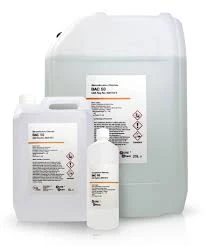Exploring the Properties and Applications of Polyhydroxycarboxylic Acids in Modern Chemistry
Polyhydroxycarboxylic acids (PHCAs) are a diverse group of organic compounds characterized by the presence of multiple hydroxyl (-OH) and carboxyl (-COOH) functional groups. These unique structural features contribute not only to their chemical properties but also to their wide range of applications in various fields, including pharmaceuticals, agriculture, and food sciences.
One of the most significant members of this class is citric acid, which is naturally occurring in citrus fruits. Citric acid is extensively used in the food industry as a preservative and flavoring agent due to its ability to impart sourness and enhance the overall taste. Additionally, its chelating properties allow it to bind metals, making it effective in preventing discoloration in fruits and vegetables. Beyond food applications, citric acid serves as a crucial intermediate in the Krebs cycle, playing a vital role in cellular respiration and energy production.
Another noteworthy polyhydroxycarboxylic acid is tartaric acid, predominantly found in grapes. It is well-known for its application in the production of cream of tartar, a common ingredient in baking that stabilizes egg whites and prevents sugar crystallization. Moreover, tartaric acid has applications in winemaking, where it plays an essential role in controlling the acidity and quality of wine.
In addition to their culinary uses, PHCAs have gained attention in the realm of medicine and biotechnology. For instance, they exhibit promising antimicrobial properties, making them potential candidates for developing natural preservatives and antibacterial agents. Research has shown that certain PHCAs can inhibit the growth of harmful bacteria, thus contributing to food safety and shelf-life extension.
polyhydroxycarboxylic acid

The versatility of polyhydroxycarboxylic acids extends to their potential in drug delivery systems
. Due to their biocompatibility and biodegradability, PHCAs can be utilized as biodegradable polymers for controlled drug release. Their ability to form hydrogels further enhances their application in tissue engineering and regenerative medicine, allowing for the encapsulation of therapeutic agents while providing a supportive matrix for cell growth.Recent studies have also explored the role of polyhydroxycarboxylic acids in materials science. The synthesis of biodegradable plastics from naturally occurring PHCAs offers a sustainable alternative to conventional petroleum-based plastics. This not only addresses environmental concerns associated with plastic waste but also harnesses renewable resources, promoting a circular economy.
Moreover, the use of PHCAs in agriculture has emerged as an area of interest. Certain compounds have been found to stimulate plant growth and enhance nutrient uptake, thereby improving crop yields. This potential could be harnessed to develop eco-friendly fertilizers and biopesticides, assisting in sustainable agriculture practices.
In conclusion, polyhydroxycarboxylic acids are multifaceted compounds that bridge various fields of study, from food science to medicine and environmental sustainability. Their inherent properties and versatile applications underline the importance of ongoing research to unlock their full potential. As the demand for sustainable and natural products continues to rise, PHCAs are likely to play an increasingly vital role in shaping future innovations across multiple industries. Their contribution to human health, food preservation, and environmental sustainability makes them indispensable in our quest for a more sustainable future.
-
The Ultimate Guide to Flocculants: Transforming Water TreatmentNewsNov.01,2024
-
Improve Your Water Treatment Solutions with PolyacrylamideNewsNov.01,2024
-
Enhance Your Water TreatmentNewsNov.01,2024
-
Empower You to Achieve the Highest Standards of Water QualityNewsNov.01,2024
-
Effective Scale InhibitorsNewsNov.01,2024
-
Discover the Power of Poly Aluminum Chloride in Water TreatmentNewsNov.01,2024





